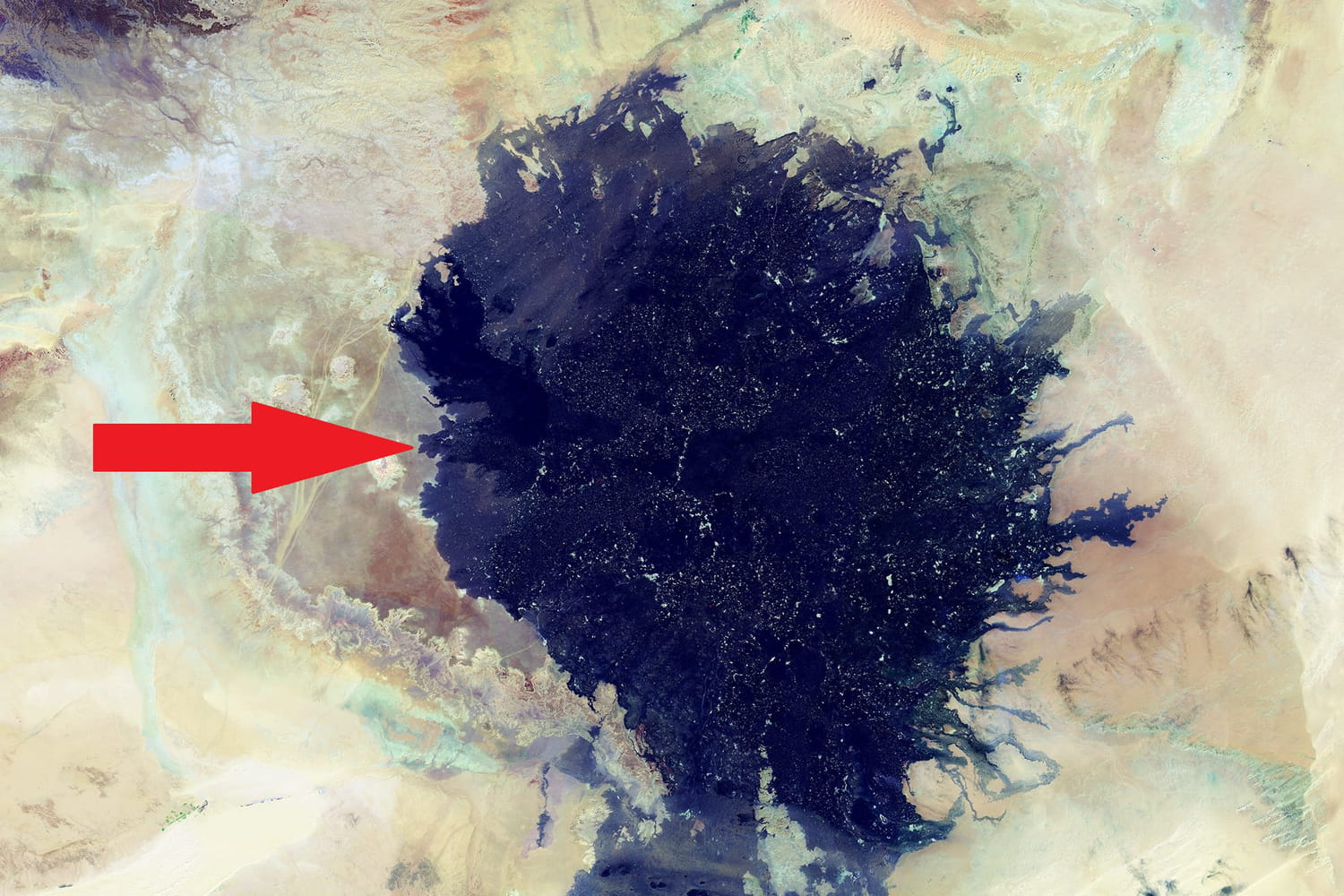An impressive geological secret.
The Sahara desert, far from being a simple extent of immaculate sand, hides impressive geological secrets. NASA scientists photographed a surprising “black spot” in the middle of the desert, contrasting with the golden reflections of the surrounding sand. Located in the center of Libya, this dark zone could be discovered thanks to the “Mosaïquage à Best Pixel”; An imaging technique which consists in selecting the clearest photos from thousands of images taken over 3 years and thus eliminating clouds or dust storms, thus offering a detailed vision of this remote region.
It is the Haruj, a gigantic expanse of solidified lava housing 150 extinct volcanoes, one of the most surprising fossil volcanic structures in North Africa. Its eruptions have taken place over millions of years, the most recent dating from only a few thousand years. What makes Haruj particularly fascinating is its origin. Unlike most volcanoes formed by the collision of tectonic plates, this area was shaped by a mantle plume. It is a lift of hot material of the depths of the earth, generating magma without requiring fractures in the crust. This process has led to slow and regular eruptions, similar to those of Kilauea in Hawaii, but on a colossal scale.
Seen from above, the volcanic field of Haruj offers a striking contrast with the lighter sand which dominates the surrounding desert landscape. Jet black basalt layers extend on a 45,000 square kilometers set, the equivalent about Burgundy-France-Comté. They testify to an era when volcanic eruptions regularly poured the lava on the surface according to the Center for Observation and Science of Earth Resources (EROS).
The discovery of this black area considerably enriches our understanding of the geological processes of the earth. It demonstrates that even the most studied areas of our planet can still conceal unique and unexpected phenomena, pushing us to rethink the underground dynamics that shaped the landscapes that we know today.







